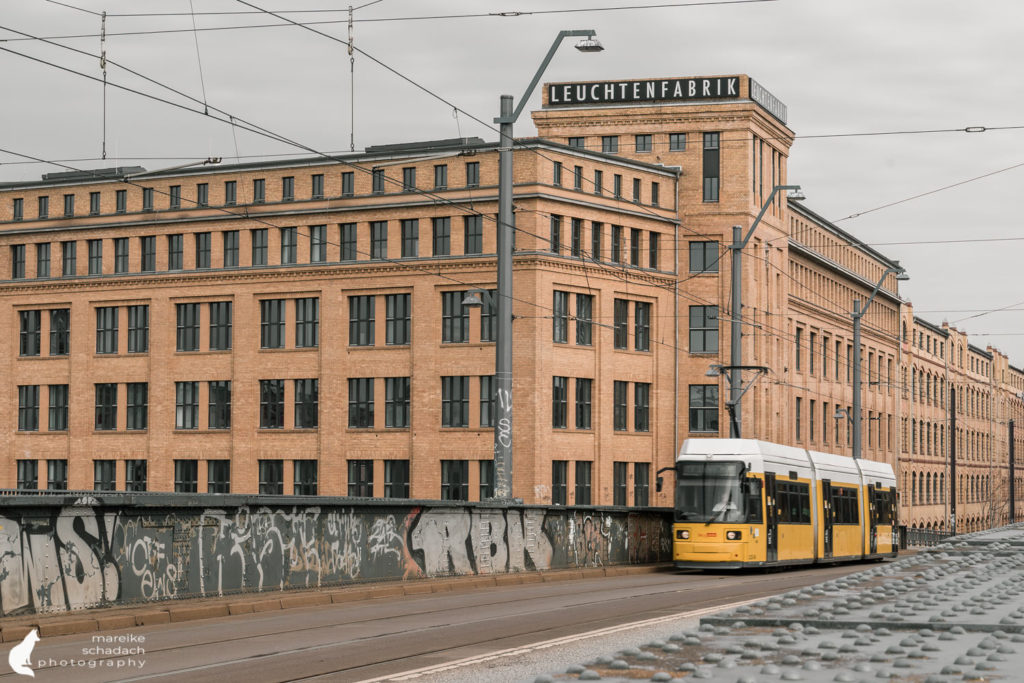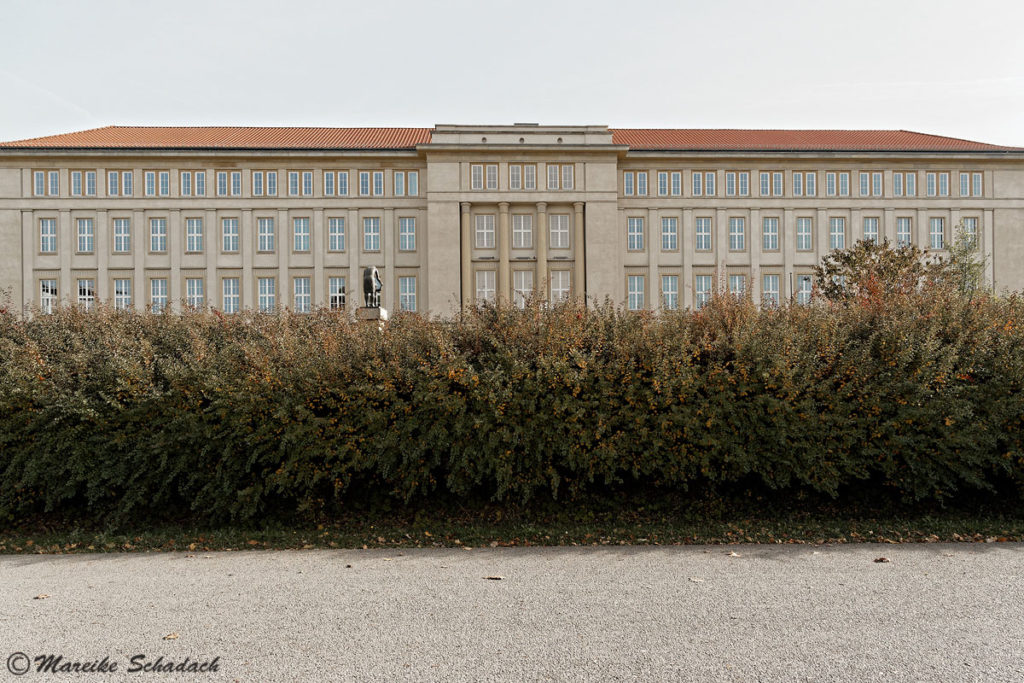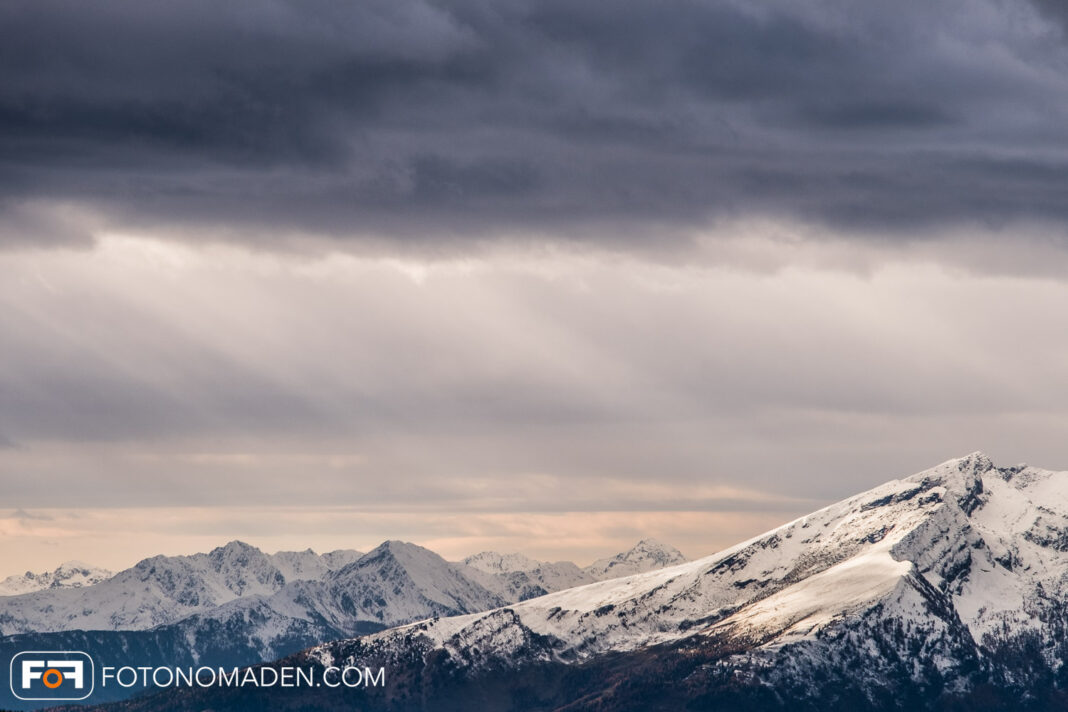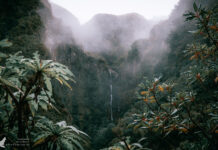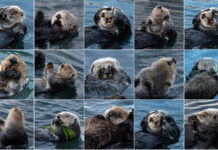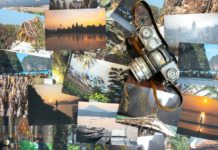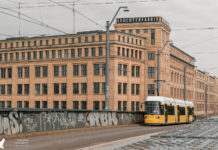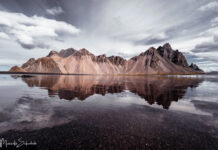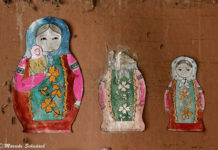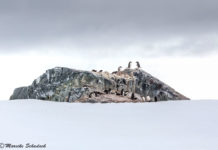It's getting cold outside, the first snowflakes are dancing in front of the window and a white winter landscape beckons me out. When photographing in winter, I always realize how unique the moments and motifs are that I capture with my camera. I always have a lot of fun looking for motifs then. Karin from Fotonomaden feels the same way. That's why I invited Karin to talk about her approach to winter photography. Because it's a very special way to not only take beautiful pictures, but also to recharge your batteries in nature.
Karin, would you like to briefly introduce yourself? You are a photography coach and run Fotonomaden.com together with your husband Markus. What is your blog about?
First of all, thank you so much for having me as a guest on your wonderful blog, Mareike! Just like you, our hearts beat for nature and travel photography and that's what our blog is all about. Due to Corona, the focus had shifted more towards photography. Now we're back to writing more travel reports, in which we also like to share tips on the right photographic equipment and exciting photo spots.
Our motto is "slow & simple". Especially since Corona, we have discovered photography as a way to recharge our batteries and slow down in nature. Our approach to photography has always been to keep things as simple as possible. We stand for outdoor photography with available light and simple camera technology. Our absolute favorite topic is image composition: how to compose atmospheric photos with light, colors, textures and other creative tools.
When we travel, we also prefer to be out in nature, observing animals, hiking and, of course, taking photos.

Do you have any simple winter photography tips for my readers?
Yes, with pleasure!
Tip no. 1: Bring color into the picture
It's worth it if you deliberately take photos in good light. Because during the so-called "golden hour", everything is bathed in warm light. These yellow, orange and red hues form a great contrast to the white snow and transform even bare winter landscapes into something special. There are free websites and apps on the internet that allow you to find out from when to when the golden hour takes place in the morning and evening at a specific location on a specific date.
If you keep your eyes open, you can discover more splashes of color than you would expect, even in winter. Incorporating something colorful into winter photos is an easy way to make them more exciting. This can include evergreen plants, colorful berries and leaves, a blue sky or lake, and colorful sunrises and sunsets.
I recommend being at the location where you want to take your photos before the golden hour begins. Then you can take your time to find great locations and motifs. When the beautiful light arrives, you can then take them in complete relaxation.
In bad weather, when the sky is overcast, the colors become paler and paler the further away the subject is. Often the sky is then even completely white and usually contributes nothing to the mood of the picture. It is therefore best to focus on the details. Because up close, the colors still come into their own.
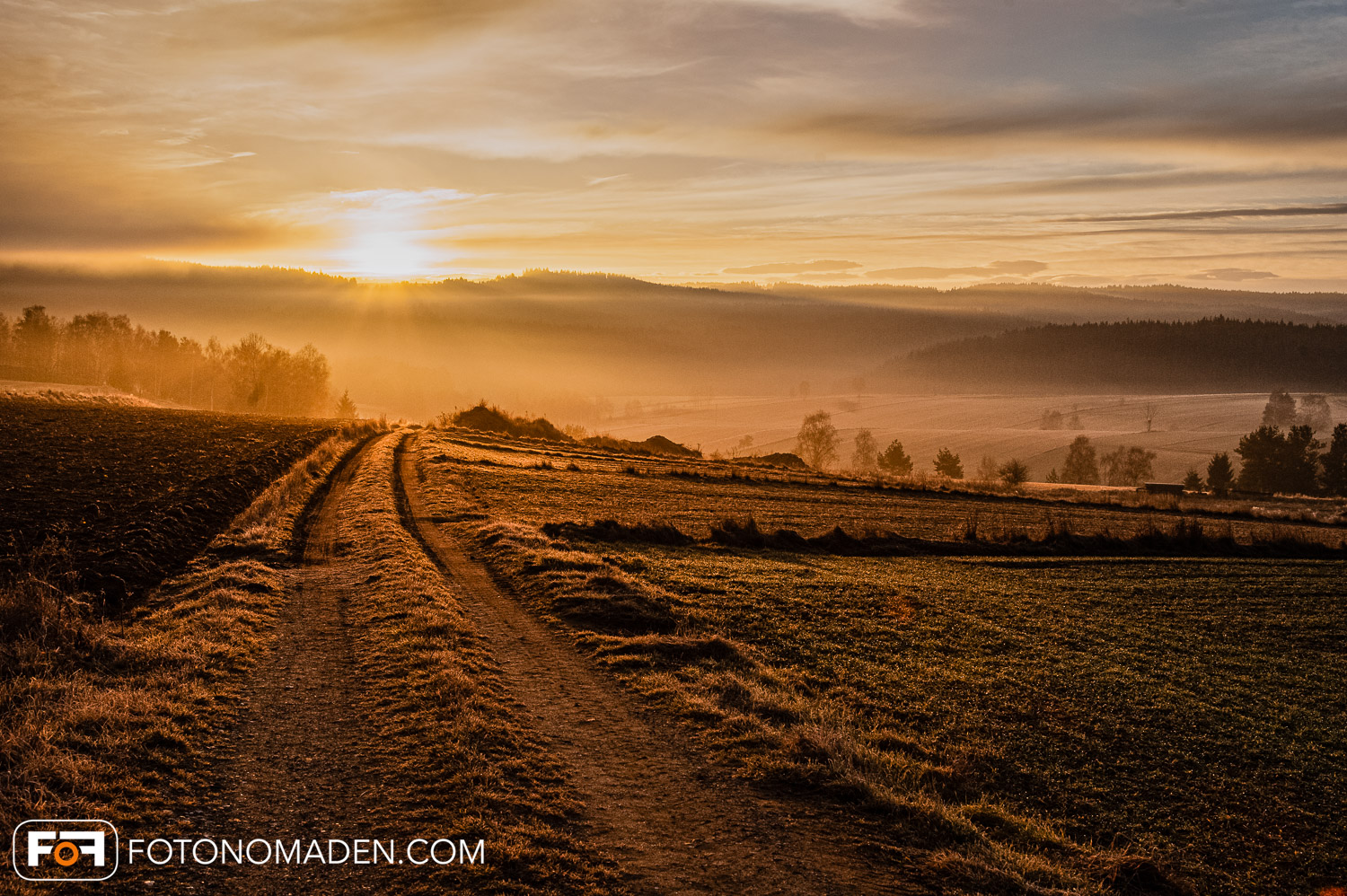
Tip no. 2: Finding focal points
If you are not photographing natural patterns, such as frozen water surfaces, it is easier to take an exciting photo if you include a focal point in the picture. Because if there is no focal point in a photo, the eye searches around and doesn't get caught anywhere.
It is important that the focal point is always in focus. Small huts, a beautiful tree, a striking stone, a person with a colorful jacket or even a pair of snowshoes are suitable for this. It is not necessary for the person to be large in the photo. If they are rather small in the photo, you can immediately see how mighty the mountain is, how high the surrounding trees are or how big the lake is where the person is standing.
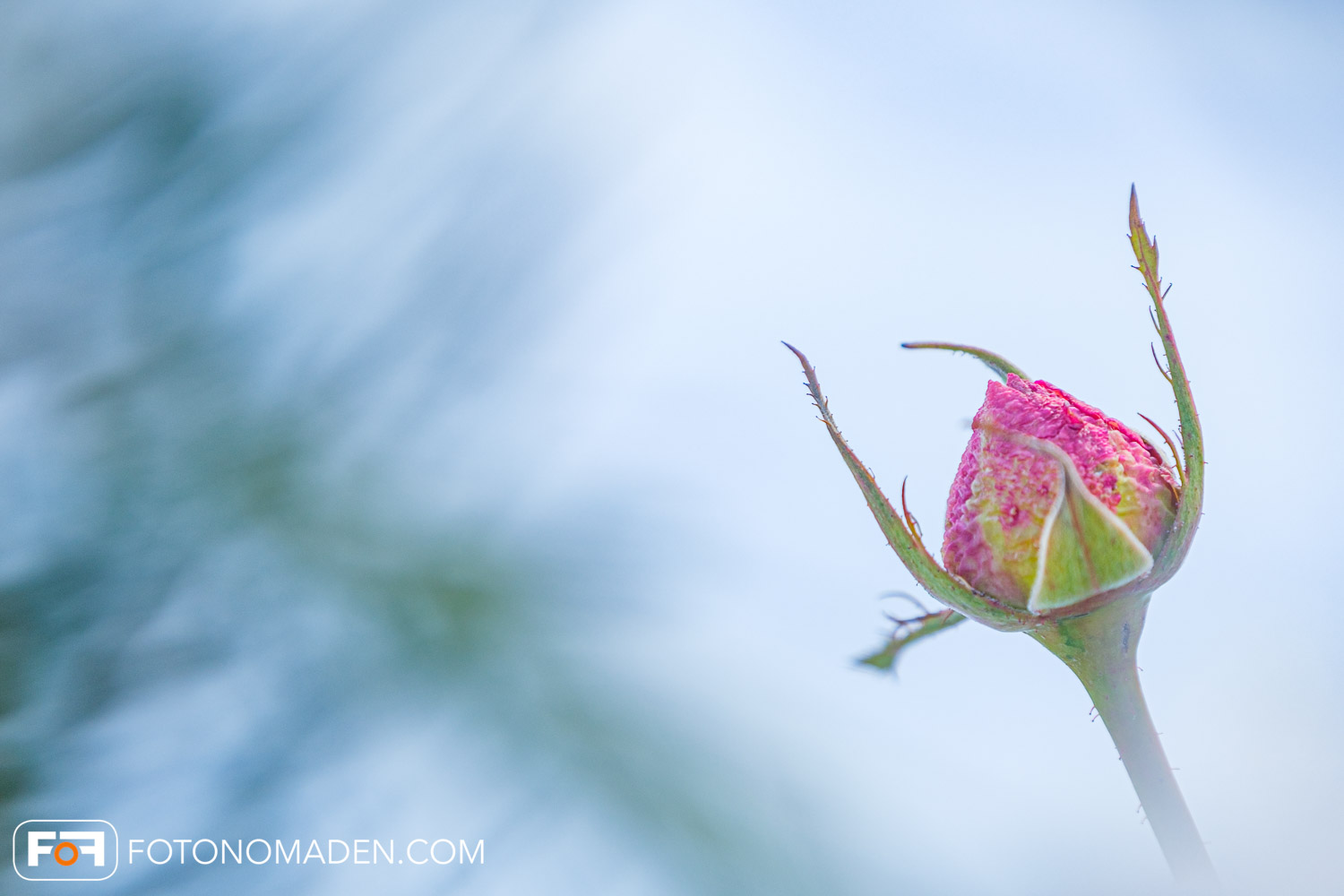
Tip no. 3: Taking photos in cold temperatures
In my opinion, it is particularly important to be well equipped in winter so that taking photos in cold temperatures is also fun. As we often kneel down or even lie down in order to be able to shoot subjects at eye level, we like to wear snowboard pants for this. It is super practical if they are additionally reinforced at the knees and buttocks. We also love our photo gloves, where you can fold away the fingertips to adjust the camera settings. They have a compartment in which you can insert a heat pad to keep your fingers warm at all times. Markus has published his own blog article with a winter photo glove test .
You should bear the following in mind with your camera equipment:
The cold discharges batteries quite quickly. It is therefore a good idea to always have fully charged spare batteries with you and to carry them close to your body to keep them warm. It's also best to leave your camera in your bag or rucksack until you start taking photos.
At home, you should not take the camera into a warm room. This could cause condensation to form and damage the electronics. It is better to put a bag of dry granules in the photo bag and leave the camera inside until it has acclimatized. Alternatively, you can also put the camera in a plastic bag so that the condensation remains on the bag.

There are fewer and fewer opportunities for classic winter photography with snow. How can you still take beautiful pictures in winter?
Yes, we know the problem. Although we live in a cold region in Lower Austria, we rarely get snow here anymore. With beautiful lighting moods (as previously mentioned), you can also take atmospheric pictures of monotonous winter landscapes. For example, a country lane that leads the eye into the picture and a little mystical foggy atmosphere are enough. In principle, lines are great design options. From a higher vantage point, for example, you can take a picture of a winding road meandering through a green coniferous forest.
I also briefly mentioned details earlier. Especially if you focus on close-up shots, you will find numerous interesting subjects even in winter. There is often a tendency to want to capture the entire winter landscape as far as the eye can see. But if there is too much in one picture, nothing really comes into its own.
Ice flowers, drops or frost on leaves and mushrooms, for example, offer an alternative way of capturing winter. If the background in the photo is blurred, the subject stands out even more. The best way to do this is to set the camera to the motif program with the flower. If you set the camera yourself, select an open aperture (= small number). Then look for a suitable location where there is nothing behind the subject for a long time (i.e. not the next branch, etc.). If you then get close to the subject when taking the photo, you can be sure that the background will be nice and blurred.

It is also important to ensure that the background is as uniform as possible. Dark spots or tangled branches, etc. quickly distract from what you actually want to show. You can see from the photos what a difference it makes if you look for a calm, regular background. You can often use the sky for this if you crouch down a little and photograph upwards.

You have written a special e-book on the subject of winter photography. What is it about?
During the corona period, I developed my "slow & simple" approach to photography. In my eyes, the mainstream approach to photography is very technical. This is also reflected in most photography books and courses. "slow & simple" photography, on the other hand, is characterized by a strong focus on image composition and the simplest possible camera technique. My aim is to help people to inspire their creativity, to switch off and to photograph with joy and ease, without pressure, and at the same time to recharge their batteries in nature. For me, this means really taking time for each individual motif instead of quickly snapping a lot of photos in passing. You definitely take more exciting pictures this way and enjoy them more.
In my "slow & simple" photography e-books (winter, forest, water, flowers & blossoms) you will always find 40 photo ideas on the respective topic. Each inspiration is accompanied by several sample images as inspiration and simply explained, easy-to-implement tips.
In the winter photography e-book, 28 of the 40 photo inspirations can be realized even without snow and ice. Most of them can even be taken with a smartphone. Four ideas are specifically for advanced photographers, for which you need to be able to set up the camera yourself. However, these are clearly marked. The winter photography e-book is therefore suitable for every skill level and every camera.
Do you also offer online courses on the subject?
Yes, we will be offering online winter photography workshops again in January and February 2024. When you register, you will receive the e-book free of charge.
Link: https://www.fotonomaden.com/workshops/winter-fotoworkshops/
In your opinion, what is the most important thing to be able to take beautiful winter pictures?
In my opinion, two points make the biggest difference: firstly, consciously paying attention to the light. Secondly, that you really take your time for each subject. It's better to take fewer pictures and go home with more beautiful images. To make this work, I recommend taking different versions of the same subject. Check on the spot whether the focus is right, whether anything is distracting from what you actually want to show, etc.

When I think of winter photography, as a fan of Scandinavia I always think of the Northern Lights. Is that also the subject of your e-book Winter Photography?
Experiencing the Northern Lights is really something very special! Yes, there is an inspirational section dedicated to this topic in the winter e-book. But there are also other detailed articles with helpful tips on our blog. Among other things, we conducted an interview with a Northern Lights photography professional, which you can read here .
Just like you, we are big Scandinavia fans and will be traveling to the Lofoten Islands in March 2024 to photograph the Scandinavian winter and hopefully the Northern Lights. Afterwards, we will of course report in detail on our blog.
Finally, I have a very personal question for you: What is your personal favorite motif in winter that you look forward to every year?
Phew, it's difficult to limit myself to one motif because I love variety. In principle, I'm fascinated by details. In winter, I find ice the most exciting because it comes in so many different shapes and forms.
More Photography Articles to read:
Want to go on a photo tour right away, even without snow? How about a Photo Tour in "Elektropolis" - Industrial Architecture in Berlin Schöneweide or a Journey through Time to the socialist planned city of Eisenhüttenstadt??
